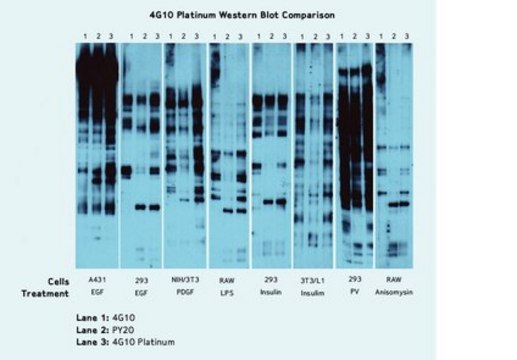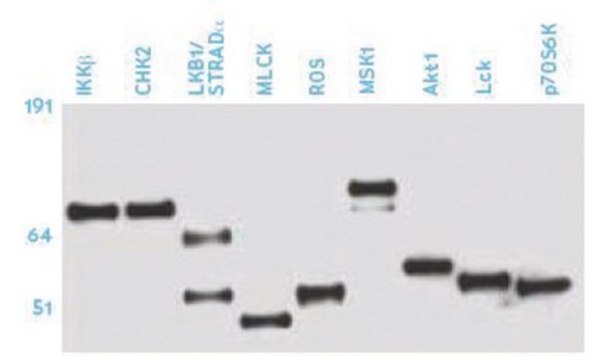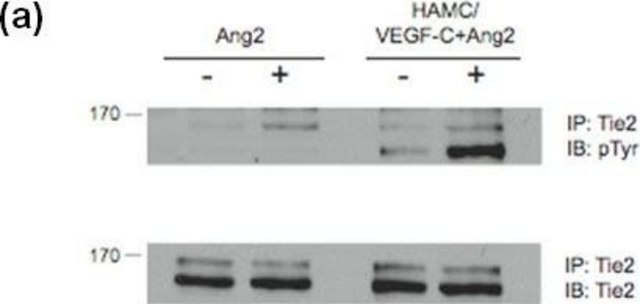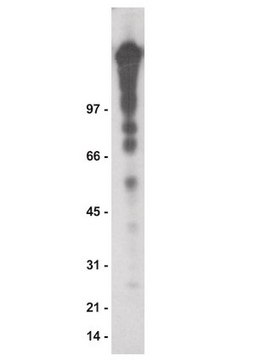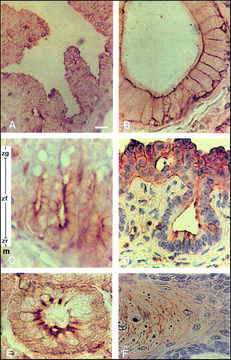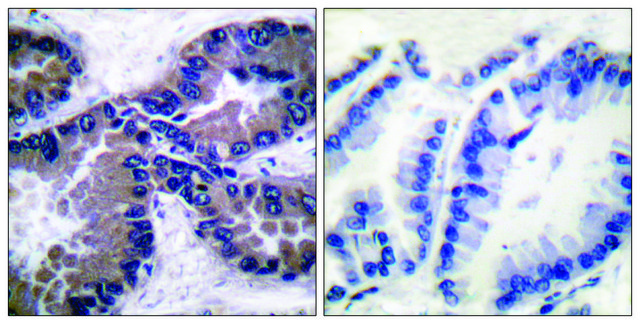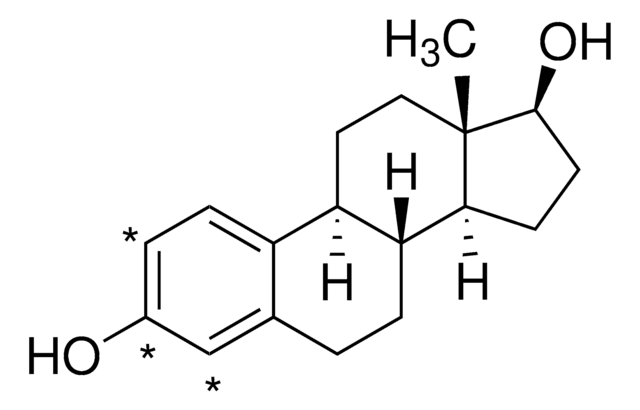05-1050-M
4G10® Platinum, Anti-Phosphotyrosine Antibody (mouse monoclonal cocktail IgG2b)
clone 4G10®, Upstate®, from mouse
Synonym(s):
Anti-phosphotyrosine antibody
About This Item
Recommended Products
biological source
mouse
Quality Level
antibody form
purified immunoglobulin
antibody product type
primary antibodies
clone
4G10®, monoclonal
species reactivity (predicted by homology)
all
manufacturer/tradename
Upstate®
technique(s)
ELISA: suitable
flow cytometry: suitable
immunocytochemistry: suitable
immunofluorescence: suitable
immunohistochemistry: suitable
immunoprecipitation (IP): suitable
western blot: suitable
isotype
IgG2b
target post-translational modification
phosphorylation (pTyr)
Related Categories
General description
Specificity
Immunogen
Application
Signaling
General Post-translation Modification
Quality
Western Blot Analysis: 1:1,000-1:2,000 of this antibody detected tyrosinephosphorylated proteins in a modified RIPA lysate from EGF-treated human A431 carcinoma cells.
Target description
Physical form
Liquid at 2-8°C.
Storage and Stability
Analysis Note
Suggested Positive Antigen Control: Cat. # 12-302, EGF-stimulated A431 cell lysate is provided as a free positive antigen control for western immunoblotting. Aliquot as desired, refreeze immediately, and store at -20ºC. The lysate is stable for 6 months at -20ºC. Before use, add 2.5 μL of 2-mercaptoethanol per 100 μL of lysate and boil for 5 minutes to reduce the preparation. Load 20 μg of reduced lysate per lane for immunoblot analysis.
Legal Information
Disclaimer
Not finding the right product?
Try our Product Selector Tool.
Storage Class Code
12 - Non Combustible Liquids
WGK
WGK 1
Flash Point(F)
Not applicable
Flash Point(C)
Not applicable
Certificates of Analysis (COA)
Search for Certificates of Analysis (COA) by entering the products Lot/Batch Number. Lot and Batch Numbers can be found on a product’s label following the words ‘Lot’ or ‘Batch’.
Already Own This Product?
Find documentation for the products that you have recently purchased in the Document Library.
Our team of scientists has experience in all areas of research including Life Science, Material Science, Chemical Synthesis, Chromatography, Analytical and many others.
Contact Technical Service